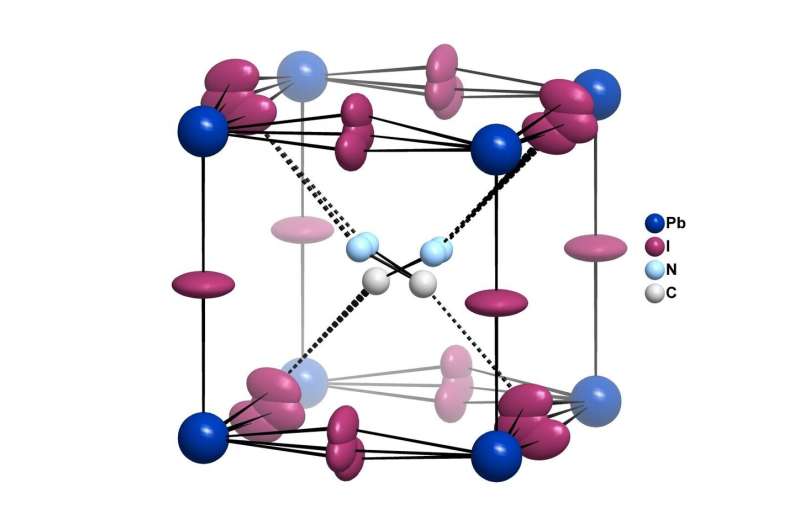Perovskite solar cells: Possible aspects of high efficiency uncovered

Solar cells based on perovskites have reached enormously high efficiencies within only a few years. Those with hybrid halide perovskite, i.e. materials containing inorganic and organic components, achieve particularly high efficiencies, but lack long-term stability. Even though inorganic perovskite semiconductors, such as CsPbI3, are less efficient, they are considered interesting as well, since they may overcome the stability issues of hybrid perovskites.
Up to now, it was assumed that hybrid and purely inorganic perovskites do not differ fundamentally in their crystalline structure. When producing perovskite materials, it often occurs that no large single crystals are formed, but countless tiny twin crystals instead. This makes a crystal structure analysis particularly complicated and prone to errors and low precision.
An HZB team headed by Prof Susan Schorr and Dr. Joachim Breternitz has now achieved a breakthrough in understanding the crystalline structure of hybrid halide perovskites. The team investigated crystalline samples of methylammonium lead iodide (MAPbI3), the most prominent representative of this class of materials, at the Diamond Light Source synchrotron (DLS) in the United Kingdom using high-resolution single-crystal diffraction. This approach provided data for a more in-depth analysis of the crystalline structure of this material.
The team was also able to clarify whether ferroelectric effects are possible at all in this hybrid halide perovskite. Ferroelectric domains can have favourable effects in solar cells and increase their efficiency. However, measuring this effect in samples is difficult—a null result can mean that there is either no ferroelectric effect or that the ferroelectric domains cancel one another's effects out.
"From a crystallographic point of view, some conditions are necessary for ferroelectricity: a ferroelectric effect can only occur if the crystal structure does not contain an inversion centre, and additionally if it exhibits a permanent polar moment," explains Breternitz.
Previously, it was assumed that the crystal structure of MAPbI3 did contain an inversion centre. However, the results of the crystal structure analysis show this is not the case: "The organic methylammonium cation MA+ plays a major role in this," explains Breternitz. This is because the MA molecule is not spherically symmetrical and is also considerably larger than a single atom, so that it generates a polar moment with the adjacent iodine atoms. The occurrence of ferroelectric domains in MAPbI3 is therefore possible.
For inorganic perovskites incorporating an alkali atom instead of the MA molecule, this mechanism is not applicable. That means the more stable inorganic perovskites may be fundamentally somewhat more limited in their efficiency than their hybrid halide relatives.
More information: J. Breternitz et al, Role of the Iodide-Methylammonium Interaction in the Ferroelectricity of CH3 NH3 PbI3, Angewandte Chemie International Edition (2019). DOI: 10.1002/anie.201910599
Journal information: Angewandte Chemie International Edition
Provided by Helmholtz Association of German Research Centres





















